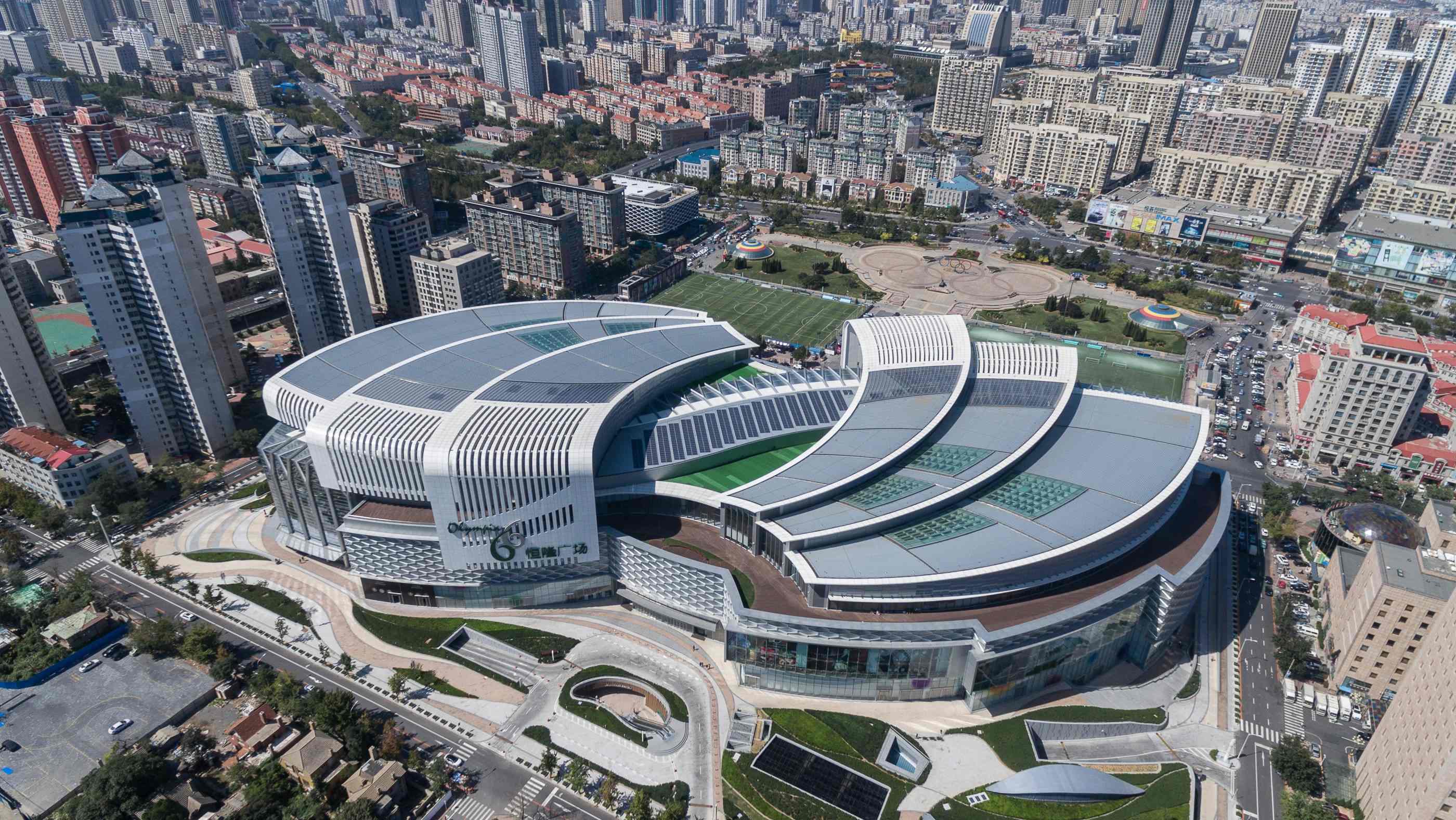
China
17:01, 19-Dec-2017
China’s urban future: An interview with Keith Griffiths
CGTN's Zhang Yuchen and Zhang Wanbao

How will the requirements arising from China’s rapid urbanization course be met? Keith Griffiths and other architects from top firm Aedas see high-rise and mixed-use developments as “unique and appropriate” solutions.
China has seen an increasing need for livable urban space in fast-growing cities, a requirement emphasized in 2011 when urban dwellers hit 50 percent of the country’s total population.
“As density kept increasing, I kept focusing upon what people needed to recreate. What they need is public space. If there is not enough land, we need to use our land compactly,” said Griffiths, chairman and global design principal of Aedas, one of the world’s top five architecture companies.

North Star Mixed-use Development, Beijing, China, by Andrew Bromberg at Aedas/Photo provided to CGTN
North Star Mixed-use Development, Beijing, China, by Andrew Bromberg at Aedas/Photo provided to CGTN
Aedas, derived from the Latin word “build,” set up its first office in mainland China in 2002 in Beijing. As a witness to the country’s high-speed development in urban planning and construction in the past 15 years, Aedas has designed more than 100 projects in Chinese cities, including high-rise commercial and residential buildings, airports and civic facilities.
“More than 50 percent of construction activities in the world are in China today,” Griffiths told CGTN Digital. “The opportunity to create great architecture is more in China than in anywhere else in the world.”
After moving to Hong Kong in the early 1980s, Griffiths started to see from 1985 to 1997 the growth of Southeast Asia: Vietnam, Singapore, Kuala Lumpur, Jakarta, Bangkok, and new tourist resorts in Thailand and the Philippines.

Xinhua Bookstore Group Jiefangbei Book City Mixed-use Project, Chongqing, China, by Aedas /Photo provided to CGTN
Xinhua Bookstore Group Jiefangbei Book City Mixed-use Project, Chongqing, China, by Aedas /Photo provided to CGTN
They were all growing stronger until 1997. Then the Asian financial crisis slowed those cities down, while China continued to develop.
Griffiths sensed the potential change as early as in 1992 when his first master plan project in the Chinese mainland took place on 6.75 square kilometers of land in Guangzhou, Guangdong Province in South China.
“It was considered amazing for any architects in 1992,” said the chairman. “No one realized in those days the scope and scale. The master plan has never been heard of in the West.”
China's urbanization has since entered a stage of transformation and is now upgrading in the mid-to-late period. It is estimated that the urbanization rate in China will reach 60 percent in 2020, and 65 percent in 2030 and 70 percent in 2050, according to experts from an urban planning conference in Beijing in October.

Hengqin International Financial Center, Zhuhai, China, by Aedas /Photo provided to CGTN
Hengqin International Financial Center, Zhuhai, China, by Aedas /Photo provided to CGTN
It took Europe 200 years to urbanize just 200 million people, one million people a year. China is operating at 20 times that speed in a more complex world. “China has proved to be amazing with 1.4 billion people and an intent to urbanize,” he said.
In his essay and talks about densification and urbanization, Griffiths explains why interactive and porous models in high-rise buildings are important for people living in city hubs.
Within a relatively small site, the building types have to make sure people can live, work, play and access transport in one place.

Olympia 66, Dalian, China, by Aedas /Photo provided to CGTN
Olympia 66, Dalian, China, by Aedas /Photo provided to CGTN
While Western countries have fewer opportunities to build modern high-rise and high-density developments given that cities are often already built up, China has a chance to create the first cities that are 100 percent interconnected.
“True sustainable cities are ensuring every decision undertaken by computer will use the best available information to maximize the best energy being used,” Griffiths said.
As for the future international input in the field, Griffiths suggested architecture firms designing in China now must understand China and where China is going.
“So you know where China is heading towards and you are aligning with it. Instead of building another building and getting another prize in some Western contests, you create a building that really fits for the people of China and the direction they need to take to urbanize.”

SITEMAP
Copyright © 2018 CGTN. Beijing ICP prepared NO.16065310-3
Copyright © 2018 CGTN. Beijing ICP prepared NO.16065310-3